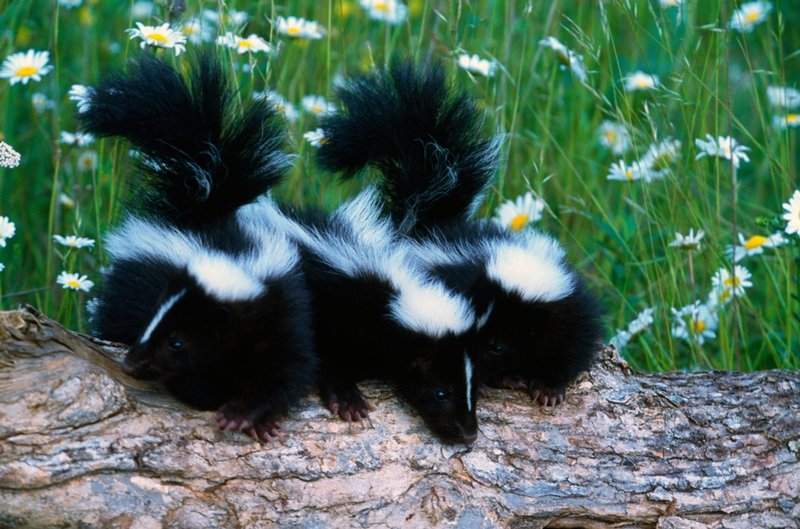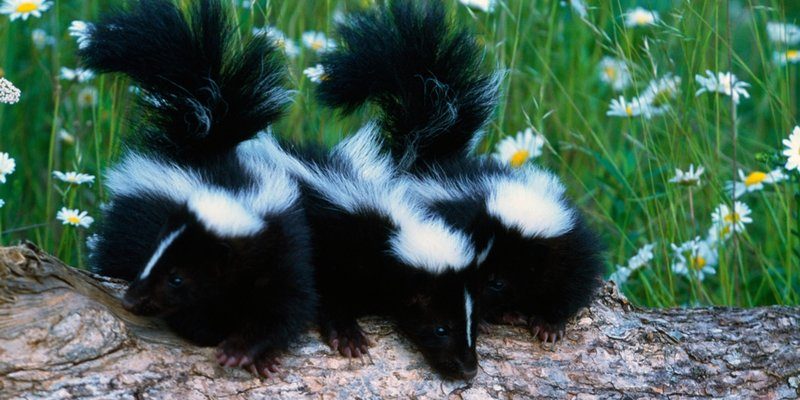
So, let’s dive into the world of skunks! Imagine a cozy little den in the woods—or even under your porch—where a mother skunk is caring for her adorable kits. Here’s the thing: skunks are surprisingly nurturing and protective, and they invest a lot of time and effort into raising their young. Let me explain how skunks navigate the challenges of parenthood in the wild.
Understanding Skunk Family Life
Skunks are part of the Mephitidae family, and they can be found across North America. They typically give birth to their kits in the spring, which makes sense considering the warmer weather and abundant food sources. Mothers are solely responsible for raising the kits, usually giving birth to 2 to 10 babies in a single litter. That’s quite a handful, isn’t it?
After birth, the mother takes on the role of caregiver entirely. She stays in a den, which could be anything from a burrow to a hollow log. This den serves as a safe haven to protect the kits from predators. It’s as if she’s created a little fortress to nurture her young. The kits are born blind and helpless, relying totally on their mother for warmth, food, and protection. Talk about a dedicated mom!
The Skunk’s Den: A Safe Haven
The choice of a den is critical for skunk mothers. They look for locations that offer not just safety but also accessibility to food. Den locations vary widely, but some common sites include:
- Underbrush in forests
- Abandoned burrows of other animals
- Under porches or sheds in suburban areas
- Hollow logs or tree roots
Each den provides a different level of security and comfort. A skunk mother will often use the same den year after year, creating a familiar environment for her kits. Isn’t that heartwarming? She keeps them safe until they’re strong enough to venture outside and explore.
Feeding and Growing Up
A mother skunk has her hands full—literally! For the first few weeks, the kits drink their mother’s milk, which is rich in nutrients. This milk is vital for their growth, giving them the strength they need to develop. As they grow older, around four weeks, they begin to experiment with solid food. This transitional period is crucial, as it helps them learn how to forage.
Mother skunks also teach their kits to be resourceful. She’ll bring back different types of food, including insects, fruits, and small animals, to show them what’s safe to eat. Imagine a little skunk kit trying to imitate Mom as it sniffs around for a tasty snack! It’s adorable and an essential part of their learning process.
Socializing and Learning Behavior
As the kits reach about 6 weeks old, they start to emerge from the den. This is a pivotal moment in their lives. Skunks are generally solitary animals, but young kits practice social skills with their siblings. They’ll play with each other, which helps them learn important survival skills. It’s like an outdoor playdate where they learn to communicate and interact with their kind.
During this stage, they also start mimicking their mother’s behaviors. For example, they learn how to dig for food or where to find appropriate shelter. They may look a bit clumsy at first, tumbling over each other, but that’s part of growing up. The more they play, the better prepared they will be for life on their own.
Protective Parenting: A Skunk’s Strategy
A mother skunk is fiercely protective of her kits. If she senses danger—whether it’s a hungry predator or an unfamiliar human—she’ll quickly take action. Skunks are known for their infamous spray, which is a powerful defense mechanism. Just think of it as a protective shield that not only keeps enemies away but also teaches her kits the importance of safety.
When threatened, she often moves her young to a safer location, demonstrating her strong maternal instinct. It’s like a parent who’d do anything to keep their kids safe, even if it means picking them up and moving them out of harm’s way. This protective nature ensures that the kits have the best chance of growing up healthy and strong.
Independent Living: Leaving the Nest
By the time the kits are about 8 to 10 weeks old, they start to become more independent. They venture out from the den more often and begin to learn how to fend for themselves. While the mother still provides some guidance, she slowly encourages them to explore their surroundings. It’s a bittersweet time for her, like that moment when a parent sees their child leave for college.
Eventually, around 12 weeks, the kits are ready to explore on their own. They will separate from their mother and start to establish their territories. This transition symbolizes their growth and newfound independence—a huge milestone in their lives.
The Important Role of Skunk Mothers
Mother skunks play a vital role in the ecosystem. By raising their young with care, they help maintain the balance in nature. Skunks consume a variety of pests, making them beneficial for gardens and agricultural areas. Plus, they teach their kits essential survival skills that are crucial for their success as adults.
If you ever spot skunks in your backyard or neighborhood, take a moment to appreciate what these little creatures do for their young and the environment. They may not be the most glamorous animals, but they’re definitely hardworking parents, just like many of us.
Skunks may not be the first creatures that come to mind when discussing parenting in the wild, but they truly offer a unique perspective. From their cozy dens to the nurturing care provided by mothers, skunks show us the dedication that goes into raising their young. It’s a beautiful reminder of the diverse ways that animals protect and educate the next generation.
So, whether you find skunks living near you or in a documentary, remember that behind those black and white stripes is a devoted mother doing her best to raise her little kits. That’s the circle of life in the wild, and it’s pretty remarkable!

